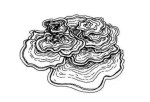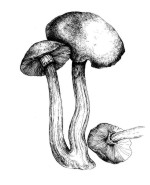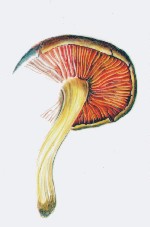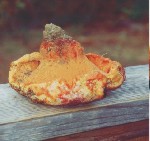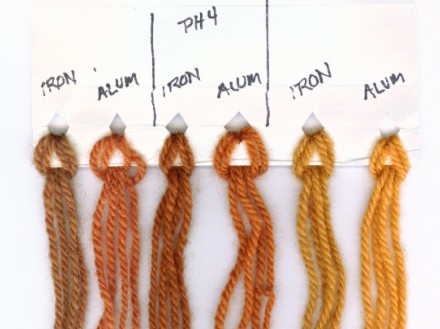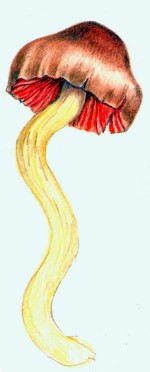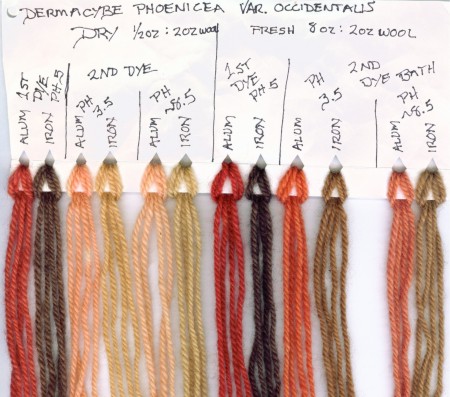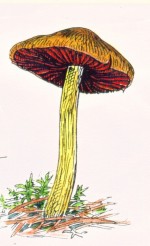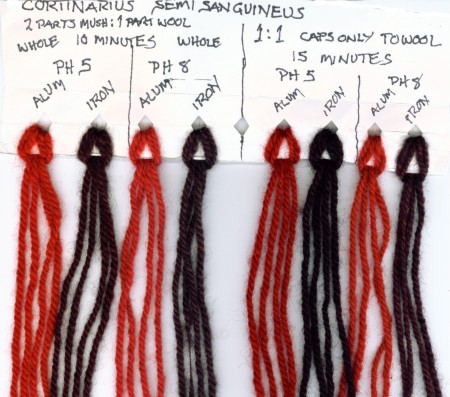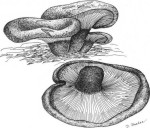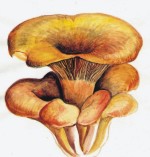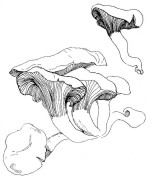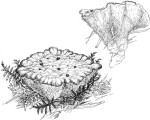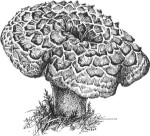Mushrooms for Color |

"DYES ON THE DECK "
Welcome to Dye Symposium workshops ”California style”! We did our mushroom dyes in a different manner than in previous Symposia. Due to the limited amount of fungi that we have been able to collect, instead of doing large skeins of dyed wool for samples for the entire membership, those Symposium attendees participating in the actual dye workshops concentrated on experimenting with yarns and mushrooms, each one preparing and recording their own samples. Samples of wool yarn premordanted with alum and iron were provided to each group. There were extra pots available for the “unexpected”, opportunities for changing the pH of the dyebath, to expand the possibilities and add to our growing body of knowledge about mushroom dyes. There was also time to “Dye your Own” on the Friday-free-for-all ”potluck dyeing”. This was our chance to experiment with the fungal bounty of the West Coast of the USA and to share and exchange our knowledge with other Symposium attendees from abroad. Fungi were generously donated from the states of Washington, Oregon, California, Idaho and Wyoming by many fiber friends of the fungi. We thank you!!! All illustrations of mushrooms are © by Dorothy Beebee and are from Miriam C. Rice's new book "Mushrooms for Dyes, Paper, Pigments, & Myco-Stix™". The wool dye samples were compiled for me by Symposium attendees and dye afficianados Janet and David Bianco. |
|---|
MUSHROOMS |
DESCRIPTIONS |
DYE
RESULTS on WOOL |
Phaeolus schweinitzii
Gymnopilus spectabilis |
Phaeolus schweinitzii: With an alum mordant, this large rust colored "Dyers Polypore" will yield luscious yellow and gold dyes when it is used fresh. We used a combination of dried fresh specimens and new fresh ones that were found at the base of Douglas Fir trees on Symposia forays. Gymnopilus spectabilis: Fresh & dried specimens yielded a buttery yellow dye on alum mordanted wool from these large golden yellow mushrooms which are often found in clusters on dead Bishop Pine. |
valign="top"> Dyes from Phaeolus schweinitzii and Gymnopilus spectabilis |
Dermocybe
malicoria gp.
Hypomyces lactifluorum |
Dermocybe malicoria gp: Another lover of pine trees, this lovely Dermocybe has the typical umbonate cap, cinnamon brown in color, with brilliant orange gills and a yellowish stalk. If you cut the cap and stem lengthwise, you see olivaceous tones in the flesh. The peachy apricot colors of the dyes are intensified if the pH of the bath is adjusted toward acidic. Hypomyces lactifluorum - the "lobster mushroom" is a parasitic mushroom that contains some anthraquinone pigments similar to those found in the Dermocybes. |
Dyes
from Dermocybe malicoria (4 on the left) and Hypomyces lactifluorum (2 on right) |
|
Dermocybe phoenicea var. occidentalis This favorite of the California mushroom dyers, sometimes called the "Western Red-Dye" for the beautiful red and rose dyes it produces, is often found in the Bishop pine woods of Mendocino County.It is also seen in the mixed conifer, madrone hardwoods with a cap of polished dark red (sometimes called "ox-blood red"), with brilliant, luminescent red gills, and a yellow stalk. |
|
Dermocybe |
Dermocybe semi-sanguinea Much like the Dermocybe phoenicea in coloration and habitat, Dermocybe semi-sanguinea is found occaisonally along the Mendocino Coast, in the same Bishop Pine and mixed conifer habitat. However, this lovely mushroom has a light brownish-fawn colored cap atop its brilliant red gills and straw colored stalk. The dried specimens that we used for dyes were collected in Oregon and sent to us by Anna Moore. mi |
|
Tapinella atrotomentosa |
Tapinella
atrotomentosa, (=Paxillus
atrotomentosa) is a lovely velvety brown- footed mushroom that
sometimes gives us violet dye, sometimes green, sometimes blue...
We had a lot of dried specimens to experiment with, achieving a range
from purle ot sdark green, depending on which mordant had been used. |
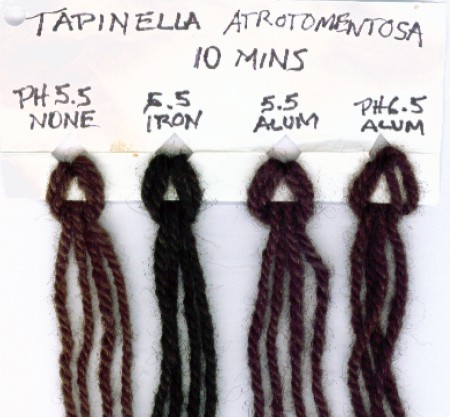 |
Omphalotus olivascens |
Omphalotus olivascens This "Jack O' Lantern" mushroom has a yellowish orange cap with olive overtones, and gills of the same color descending down its stalk.The trumpet shaped mushroom can often be found in massive clumps at the base of hardwood tree stumps. We used dried specimens to achieve almost instantaneous violet and lavender dyes on wool samples. This is the first time that this mushroom has been used at an International Fungi and Fibre Symposuim! |
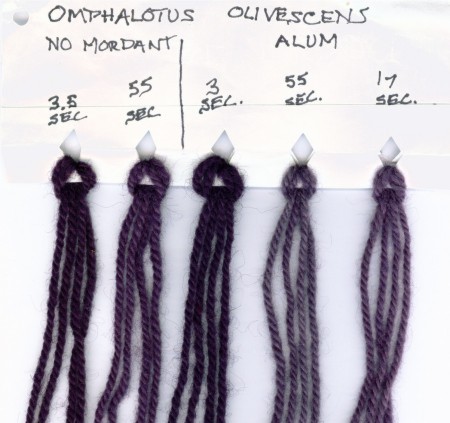 |
Hydnellum peckii
Sarcodon imbricatus |
Hydnellum peckii is a toothed mushroom with a whitish-pink suede-like cap, (often covered with dark red droplets whe young), but then turning a dark brown with a pinkish edge when it matures. We intensified our blue green hues by changing the pH of the dye to 9 using washing soda. Sarcodon imbricatus was used in 2 forms - frozen and dried. Note the dfference in color between the two. Sarcodon laevigatum was a new dye mushroom brought to us from Idaho by Connie Nelson Dried specimens dyed lovely shades of green without any adjustment of pH. |
DYES on the DECK |
Early
American Crafts |
SPECIAL EVENTS |
